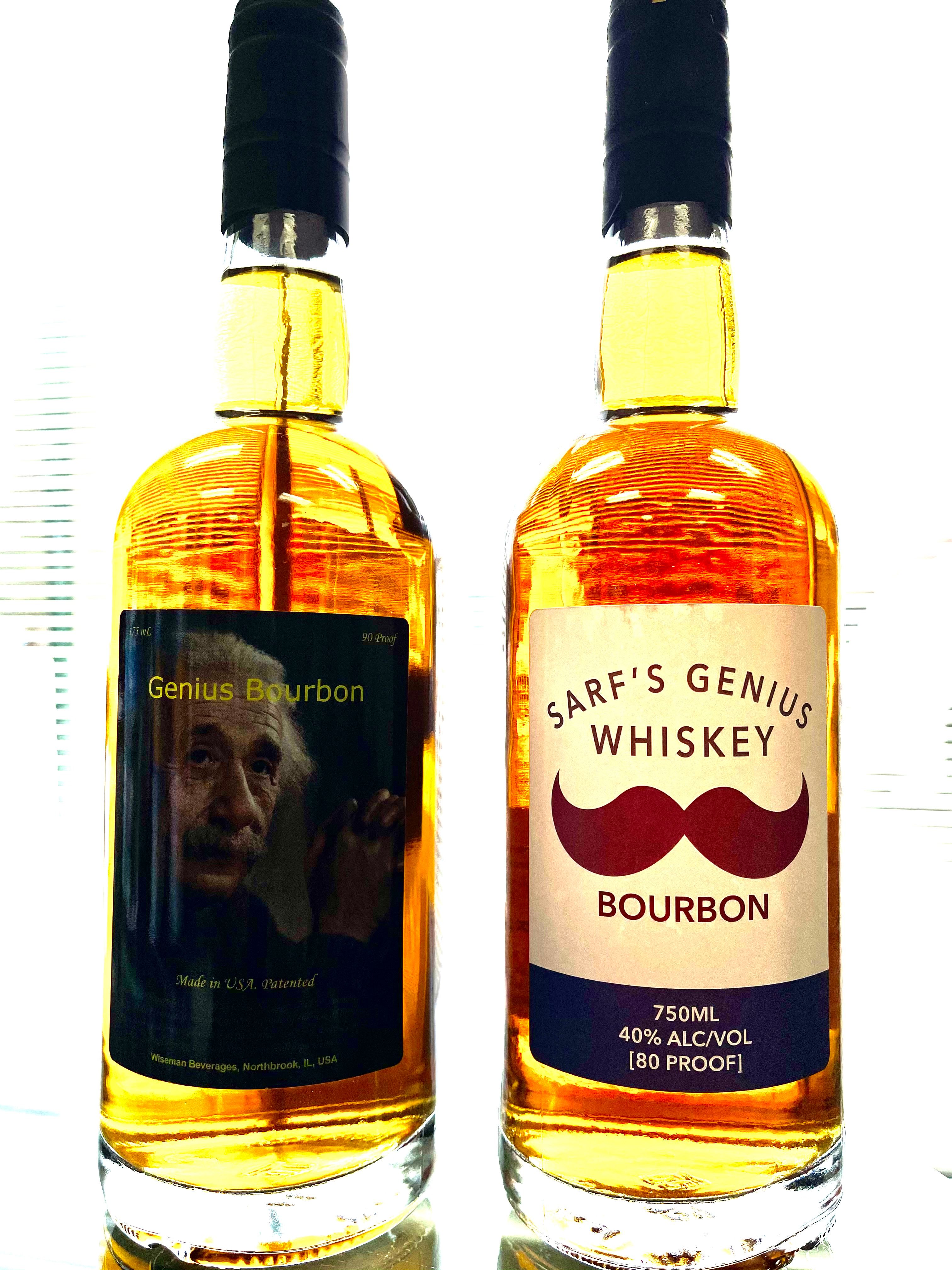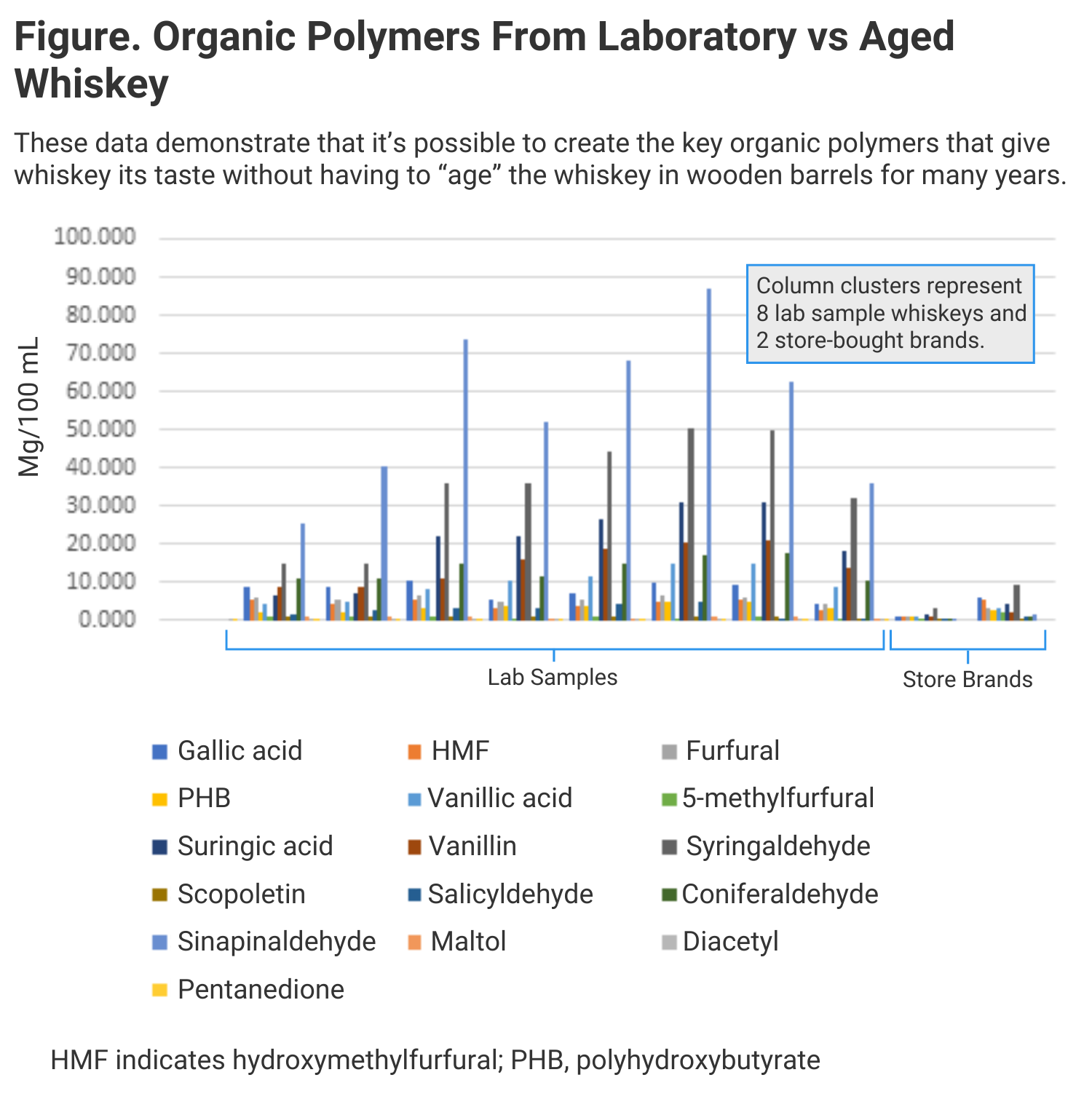The alcoholic beverage industry is bigger than the pharmaceutical industry—over $1.5 trillion worldwide. The technology for aging alcohol (letting it sit in a barrel) dates back thousands of years, and it remains an enigma. While I have developed many technologies with dozens of patents to make biological drugs more affordable, now I am reporting my inventions for aging of alcoholic beverages by eliminating the use of wooden barrels and accelerating the natural process by thousands of times through thermodynamic manipulation under Fick's law of diffusion.
Now, for the first time, we can create proprietary tastes using several types of woods simultaneously, and all at a fraction of the cost, resulting in “biobetter” whiskey. It is about time that we become more creative with one of the world’s most popular commodities. Yes, we should make drugs affordable, but we should also not deprive humanity of the taste of the best whiskeys (the “reference” products) at the lowest cost to make billions of people happy every day. I am trying to let happiness be affordable.
After decades of effort to make biological drugs affordable as biosimilars, I realized that one conventional paradigm must be shifted—the belief that aged whiskeys should be expensive.
These whiskeys go for $71,000 to $6.3 million per bottle:
- Isabella’s Islay
- The Macallan 1926
- The Macallan Valerio Adami 1926
- The Macallan M
- The Macallan 64 In Lalique Cire Perdue
- Dalmore 62
- Dalmore 64 Trinitas
- Glenfiddich Janet Sheed Roberts Reserve 1955
- Springbank 1919
- Glenfiddich 1937
How many of you would ever have the good fortune of tasting the most expensive whiskeys? And if you did, would you be able to tell which is which? I began to wonder why we give such reverence to aged whiskey. First, I disagreed with the choice of the word “aging”; nothing can age if it is not alive, and to the best of my understanding, molecules do not have a soul. Over time, the only thing that happens in a whiskey barrel is the evaporation of alcohol and the completion of chemical reactions with a high thermodynamic barrier. The label affixed to the bottle trains your mind to anticipate something of ethereal nature. In the end, the secret of whiskey boils down to simple chemical reactions; so, what if I were able to expedite the reaction process? Would I be able to produce a good-tasting 12-year-old whiskey within hours? The answer was yes, absolutely.
Using my patents on the downstream processing (“distilling”), I developed a way to “age” whiskey, or expedite the chemical reactions, more appropriately than commercial manufacturers can do. Before I share the proprietary technology and make you believe that you can taste a $1000 bottle of whiskey without taking another mortgage on your home, I will share the facts about how whiskey got its start.
The spelling whiskey is standard in Ireland and the United States, while whisky is used in all other whiskey-producing countries. It is a distilled alcohol made from fermented grain mash; grains are malted to improve fermentation and include barley, corn, rye, and wheat. Whiskey is typically aged in wooden casks, often old sherry casks, or may also be made of charred white oak.
The history of whiskey possibly began 4000 years ago, when the Babylonians in Mesopotamia may have practiced distillation. The aging process was accidentally discovered as the alcohol was transported in wooden barrels. The oak wood was used because these barrels had the most negligible evaporation, the oak being a tight grain wood. As the delivered goods tasted better than when they started the journey (that often took months), the era of aging alcohol began and continues today, also in wooden barrels.
There are 2 major chemical components in wood: lignin (18%-35%) and carbohydrate (65%-75%). Both are complex polymeric materials. In addition, minor amounts of extraneous materials, mainly in organic extractives and inorganic minerals (ash), are also present in wood (usually 4%-10%). Overall, wood has an elemental composition of about 50% carbon, 6% hydrogen, 44% oxygen, and trace amounts of several metal ions. Lignin polymers form the structural materials in the support tissues of plants, including cell walls. Over time, lignin breaks down into gallic acid, furfural, vanillic acid, 5-methyl furfural, syringic acid, vanillin, syringaldehyde, scopoletin, salicylaldehyde, coniferaldehyde, sinapaldehyde, maltol, pentanedione, diacetyl, polyhydroxybutyrate, hydroxymethylfurfural. So, in essence, the aging of alcohol is no more than the extraction of lignin, its breakdown over time, and intermolecular reactions that create byproducts changing the beverage's flavor.
So, as I began the journey of making biosimilar whiskey, I analyzed my favorite brands and then a few of the most expensive brands. Testing included discovery of the chemical composition of the components listed above. I found that what I liked had an aroma and a taste that kept changing in the mouth. I concluded that such an impression could only come from the more volatile (producing the smell) and most reactive components (creating the taste). I then plotted the melting point and boiling points of these chemicals; there was a clear trend. I knew which chemicals would give me the first whiff suggestive of flavor and which ones would give a fabulous taste.
Having established that the smell and taste of whiskey depends on chemical composition, I began my prototype biosimilar whiskey by accelerating the extraction of wood elements. Instead of putting the alcohol in a wooden barrel, I put some finely ground barrel wood (100 microns) into alcohol by a process similar to downstream purification of proteins—a chromatography column made up of the wood grains and supported by glass marbles, to keep the column from collapsing. This did the job.
During fermentation and distillation, the acids react with the alcohol, forming esters, and these develop over time during aging, but because I kept the temperature high this process happened much sooner. Esters provide the flavor, and I was successful in maintaining the right temperatures over time.
I raised the temperature of the alcohol to about the boiling point, and what came out was a thick dark liquid that had absorbed 100 to 1000 times more of everything that an aged whiskey would have. I then let it cool down slowly to allow the reactions to take place. Based on the free energy of reactions, the process was efficiently expedited several fold. The figure below shows the extract compared with the best bourbon on the shelf.
The 2 data clusters on the right represent the best-selling and the most expensive bourbons. The rest are my samples prepared under different conditions. The taller columns represent larger quantities of the essential lignin components that give the whiskey its flavor. This means I could dilute my whiskey to reduce alcohol content without as much flavor loss as would occur with the aged whiskeys I tested.
Suddenly, I had a whiskey that tasted just as good as a $1000 bottle but cost me no more than $3. I then mixed various wood grains to produce unique flavors (biobetters), including a “Japanese whiskey” I created using wood brought in from Japan.
While I had access to liquid and gas chromatography, spectroscopy, mass spectrometry, and other test methods, none of these proved of any significant value. What counted was the tasting done by the “sommeliers,” who included knowledgeable whiskey drinkers. I invited several and conducted blind testing. We used quality store-bought whiskeys for the testing, some of them $100 a bottle, and none of them made it to the top, and neither did mine, but it came close.



